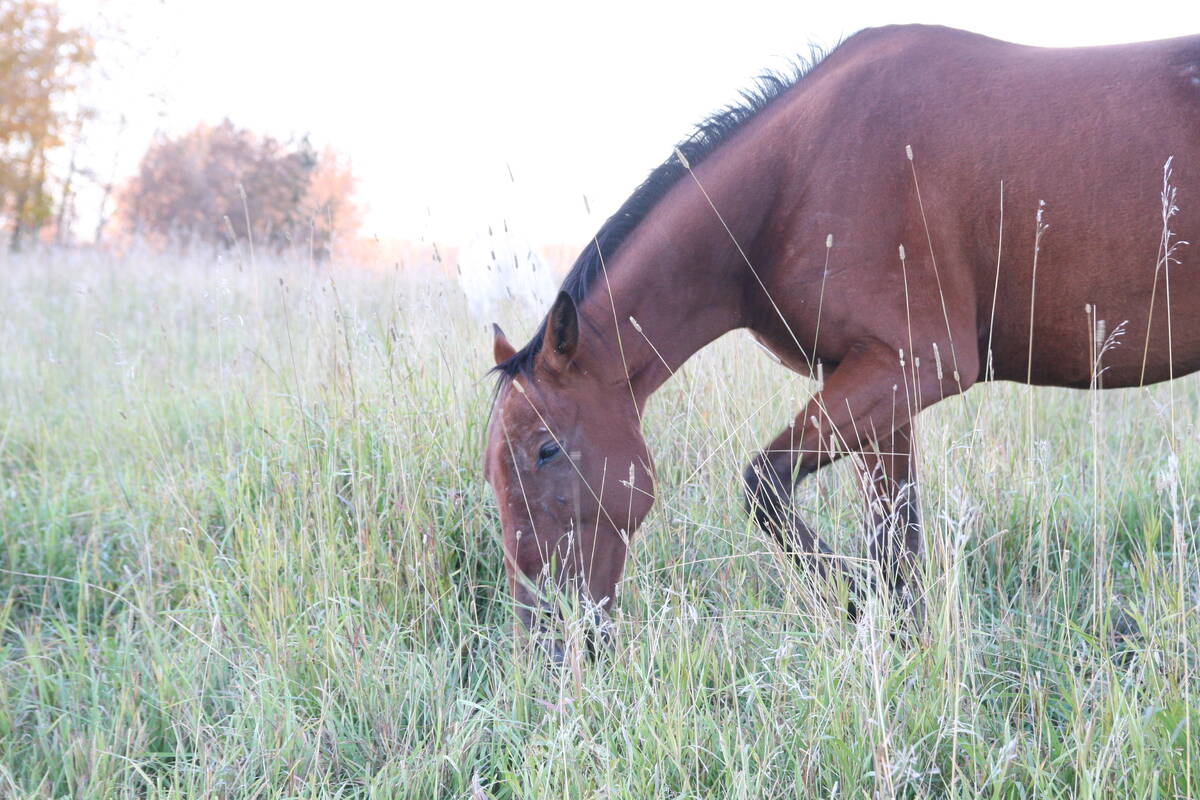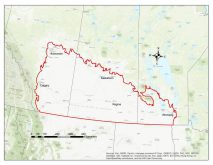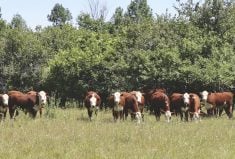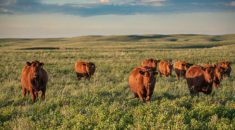Glacier FarmMedia – New varieties of winter wheat are boosting the bottom line of growers and fuelling an upsurge in acres in Manitoba.
“Winter wheat is the most profitable cereal crop for many farmers in our program,” said Alex Griffiths, a winter wheat specialist with Ducks Unlimited Canada in Brandon, Man.
“In the past two years, half our growers have seen yields above 70 bushels an acre. Prices have been strong and that has often made winter wheat their No. 1 cash crop.”
Read Also

Beware giving horses too much iron
Horses consuming too much iron through diet or well water risk health problems like laminitis. Mineral testing forage and water is good practice for owners.
With protein content sitting around 11 percent, a little lower than the spring varieties, it can be milled into flour, but the principle market is for feed wheat.
“The feed wheat market right now is very, very high and has been for the last couple of years,” Griffiths said. “I think this is also contributing to the surge in production.”
Western Canadian breeding programs have developed varieties such as Wildfire, Vortex and Goldrush, and the new Coldfront, along with the old standard, Emerson.
Improved winter hardiness is key to adoption.
“One of the biggest barriers to expansion of acres is that, if people sow a crop that doesn’t make it through the winter, they’re probably not going to sow that crop again,” Griffith said. “That winter hardiness is probably the biggest thing people are breeding for, followed by yield, because obviously bushels are what pay the bills.”
Acreage is still small, however. Only about 77,400 acres went into the ground in Manitoba last fall, but that’s up sharply from the 32,000 acres seeded in 2020. (Ducks Unlimited Canada also has an incentive plan for Manitoba: $20 an acre, up to $5,000, along with agronomic and marketing assistance.)
The organization would like more winter wheat grown in some of the more productive wetland areas because it provides better spring habitat for waterfowl. If farmers can grow profitable winter wheat, various duck species will have better nesting space near those prairie potholes they love.
Population counts on ducks found they were more abundant in winter wheat fields and there’s a reason for that. Spring tillage and seeding operations can be intrusive and destructive to nesting ducks.
“You’re probably going to hit the nest as you’re seeding,” Griffiths said. “Whereas with winter wheat, you’ve got fertilizer and herbicide and fungicide applications but that’s all done with 50 to 120 foot booms so you pretty much leave the nest intact.”
Studies showed nesting success in spring crops was around 12 per cent but it was 34 to 36 per cent in winter wheat fields.
“As a result they were producing a ton more ducks,” Griffith said. “Mallards, lots of blue wing teals, shovelers, northern shovelers and the one that’s most important, the northern pintail. They prefer to nest on bare ground or stubble and if that stubble turns into a winter wheat field, then they have a pretty good chance of success.”
What’s good for the ducks can be good for farmers, too, as winter crops split the workload in terms of both seeding and harvest. It also puts living roots in the ground during the shoulder season and soaks up excessive moisture during a wet spring.
Farmers who want to beef up their rotations can also seed an intercrop legume into winter wheat. Hairy vetch works well. It’s winter hardy and will fix some nitrogen during the next season. It can be harvested at the same time and, once separated, the seed may be sold as well.
“Clovers are another great one.” Griffith said. “I’ve worked with a couple producers who, after spraying their in-crop herbicide in the spring, would spread red clover to fix some nitrogen. It was something green and growing in those shoulder seasons of late fall and early spring and worked well for soil health benefits or late stubble grazing.”
More info on growing winter wheat can be found at growwinterwheat.ca.
– This article was originally published at the Manitoba Co-operator.















